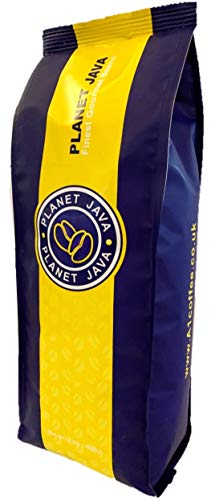Types of Coffee Beans
Behind every cup of coffee that we enjoy, there are carefully graded bean. These beans are graded based on the size, color and shape.
The AA grade is awarded to coffee beans that meet all of the above requirements, except they cannot have more than three deficient quality (quakers). They are typically Kenya AA beans.
Arabica
Arabica coffee beans, also known as Coffea arabica are the most sought-after type of bean in the world. The legend says that coffee was first discovered in Ethiopia when a goat herder observed his herd dancing with more energy after eating the fruits of the coffee plant. This led him experiment with roasting the seeds and then brewing them, making the drink which we enjoy today.
Although a variety of coffee plants are available, there are only two main species that are used as the foundation for all our favorite brews: arabica and robusta. The former is generally thought to be superior to the other, and this is evident in the taste of the final beverage.
There are a variety of arabica cultivars. Each has their own distinctive taste. Two of the most well-known varieties are Typica and Bourbon from which all other arabica varieties have been developed, either through natural mutations or through deliberate crossbreeding. The SL28 cultivar, for example, was developed in Kenya by Scott Labs and is known for its distinct chocolatey flavor.
The taste of an arabica variety is determined by the conditions under the area it is grown and also how it is treated and roasted. The type of shade that the tree gets can have a significant impact on the final product.
Robusta
Robusta coffee beans (Coffea canephora) are the second most popular variety of coffee beans. They are the beans used for the majority of instant coffees and contain twice the amount of caffeine as Arabica Coffee Beans. They are also used in the making of many espresso blends particularly for cappuccino, caffe latte and various other beverages made from coffee.
The Coffea Canephora plant was initially discovered in Sub-Saharan Africa, but it has since been cultivated all over the globe. It can grow at lower elevations and is able to withstand higher temperatures than the Arabica coffee plant, making it a more convenient crop for farmers. Vietnam is the world's largest producer of robusta followed by Brazil and Indonesia.
While the robusta coffee plant has its advantages however, it's not as adored by cupping aficionados for its bitter taste and smoky rubber notes. The majority of large coffee companies use arabica beans in their top products since it's considered to be lower-quality coffee.
The demand for premium coffees is growing and small roasters are exploring to make the most of its exceptional qualities. Our Valhalla Java and Death With Coffee are two examples of outstanding robusta coffees that are mixed with arabica to provide the perfect balance of flavour and strength. These coffees originate from Uganda, a country where robusta has been cultivated for a long time. You can learn more about them here.
Liberica
Liberica coffee beans are rare varieties that are rarely used in the world. They make up less than 2 percent of the total consumption of coffee beans and are often overlooked since they don't have the same amount of caffeine. These beans have a unique flavor that a lot of coffee drinkers find appealing.
Liberica coffee beans, though extremely scarce and extremely scarce, are still quite popular in some parts of Asia. They are most prevalent in Malaysia and Indonesia where there is a significant Muslim community. In these countries, the coffee industry has been strong for many years. Drinking a cup of coffee after a prayer is an integral part of their customs.
The history of Liberica coffee began in the 1890s, when a global epidemic of coffee leaf rust wiped out most of the world's arabica crop. This event prompted coffee producers to search for a more robust plant that could thrive in tropical climates. They soon found the Liberica.

Liberica plants are resistant to disease and pests, making them a perfect alternative to the ruined arabica crop. Liberica can also grow in lower altitudes and hot temperatures which allows it to thrive in the climate of Southeast Asia. Liberica beans are used to produce most of the coffee in the Philippines and Indonesia.
Excelsa
While it isn't common for coffee lovers to come across excelsa beans, they are beginning to gain an image for their unique flavor. According to Komal Sable of South India Coffee Co. who is a fifth-generation farmer of coffee the beans have a teardrop-like shape, but are much smaller. It's important to remember that despite the family resemblance between excelsa and liberica the species isn't distinct from the other species.
As such, it's a bit hazy as to how excelsa beans should be categorized and it's this confusion that has been at the root of the beans' insignificant presence in the world of coffee. Because of this, many roasters, growers and brewers don't know how to cultivate and use these beans properly.
It's ultimately up to each individual to decide if they prefer the taste of excelsa and it may take some time to find the perfect blend. coffee bean coffee is to remain open-minded and give every type of coffee a go until you find one you truly enjoy. You'll discover the full range of possibilities these unique beans offer. It's a journey that's well worth the ride.
